-
FREE MEMBER
NO Posting or PM's Allowed

Last edited by shooter88; 02-28-2017 at 04:53 PM.
-
02-28-2017 04:39 PM
# ADS
Friends and Sponsors

-
Legacy Member

Do you have the canteen covers ? USMC canteen covers like the cross-over flap were unique to USMC serice and there were others. Difficult to find USMC markings on items
-
-
-
Legacy Member

During WWII the Marine Corps did not contract for canteens or manufacture them. The canteen M1910 imaged in this post were both Army QMC contract. Aluminum Goods Manufacturing Co., Two Rivers, Wisconsin (A.G.M. Co.) manufactured canteen M1910 on Ordnance Department contracts in 1910-13, and 1917-18. A.G.M. Co., Manitowoc, Wisconsin, manufactured canteen M1910 on QMC contracts for Lend Lease in 1941, and in 1942-45. Aluminum Products Co., La Grange, Illinois (A.P. Co. and variations) manufactured canteen M1910 on QMC contracts 1942-43. Both of these companies also manufacture other field mess equipment items.
The Marine Corps Philadelphia Quartermaster Depot (DQP) did manufacture two distinctive canteen covers during WWII.
-
The Following 2 Members Say Thank You to RT Ellis For This Useful Post:
-
FREE MEMBER
NO Posting or PM's Allowed

Thanks for clearing that up...I was under the impression that the ones used by the Marine Corps had slight variances in them.
I do not have covers for these but will be getting one for each.
-
Legacy Member


Originally Posted by
shooter88

Thanks for clearing that up...I was under the impression that the ones used by the Marine Corps had slight variances in them.
"Used" by the Marines is a slightly different matter. Starting in 1913 the Marine Corps Philadelphia Depot started manufacturing canteens and canteen cups similar to those manufactured at Rock Island Arsenal, that are identifiable because of the "slight variances." DQP continued to manufacture canteens and cups until around 1930 when it was reported the machinery was disposed of. The canteens and canteen cups manufactured by DQP and acquired from the Army kept the Corps supplied until the emergency of 1940 at which time it was decided to purchase from the Army rather than reacquire the machinery and go back into production at DQP. The canteens and canteen cups manufactured at DQP continued in use until unserviceable through WWII so technically some of the canteens and canteen cups used by the Marines had slight distinctive variances.
Canteen covers is a different matter. DQP started manufacturing canteen covers in 1914, and continued to manufacture the canteen covers until 1930, then went back into production in 1941 in different patterns through 1945. All of the patterns of DQP manufactured canteen covers were distinctive enough that they are easily identified.
There exist considerable misinformation about the DQP manufactured canteen covers by all of the authoritative book authors that have published catalogs of uniforms and equipment, that misunderstood the progression of the changes to the canteen covers. Collectors have accepted the misinformation as authentic and for the most part the correct information is irrelevant to collecting the material culture examples of the equipment.
The area that collectors should be cognizant of is that replicas of some of the DQP canteen covers are available, primarily from the online mail order dealers that cater to the reenactor market. At least one of these dealers mark their products as reproduction, however the replicas have enough variances in quality and color of material and construction from the originals that they are easily detected as replicas.
Comment: In collectoreze the terms replica, reproduction, and fake mean the same thing. The dictionaries indicated that replica and reproduction have the same definition. For my purposes a replica is a copy of something similar in material, construction, and appearance intended to substitute for the original item. A reproduction is something that is manufactured by the same manufacturer that previously made the product and went back into production. A fake or forgery is something purposefully manufactured, and intended to be passed off as an original, usually for profit.
-
-
FREE MEMBER
NO Posting or PM's Allowed


Originally Posted by
RT Ellis

"Used" by the Marines is a slightly different matter. Starting in 1913 the Marine Corps Philadelphia Depot started manufacturing canteens and canteen cups similar to those manufactured at Rock Island Arsenal, that are identifiable because of the "slight variances." DQP continued to manufacture canteens and cups until around 1930 when it was reported the machinery was disposed of. The canteens and canteen cups manufactured by DQP and acquired from the Army kept the Corps supplied until the emergency of 1940 at which time it was decided to purchase from the Army rather than reacquire the machinery and go back into production at DQP. The canteens and canteen cups manufactured at DQP continued in use until unserviceable through WWII so technically some of the canteens and canteen cups used by the Marines had slight distinctive variances.
Canteen covers is a different matter. DQP started manufacturing canteen covers in 1914, and continued to manufacture the canteen covers until 1930, then went back into production in 1941 in different patterns through 1945. All of the patterns of DQP manufactured canteen covers were distinctive enough that they are easily identified.
There exist considerable misinformation about the DQP manufactured canteen covers by all of the authoritative book authors that have published catalogs of uniforms and equipment, that misunderstood the progression of the changes to the canteen covers. Collectors have accepted the misinformation as authentic and for the most part the correct information is irrelevant to collecting the material culture examples of the equipment.
The area that collectors should be cognizant of is that replicas of some of the DQP canteen covers are available, primarily from the online mail order dealers that cater to the reenactor market. At least one of these dealers mark their products as reproduction, however the replicas have enough variances in quality and color of material and construction from the originals that they are easily detected as replicas.
Comment: In collectoreze the terms replica, reproduction, and fake mean the same thing. The dictionaries indicated that replica and reproduction have the same definition. For my purposes a replica is a copy of something similar in material, construction, and appearance intended to substitute for the original item. A reproduction is something that is manufactured by the same manufacturer that previously made the product and went back into production. A fake or forgery is something purposefully manufactured, and intended to be passed off as an original, usually for profit.
Thank you for the information. Well it seems that it was probably more common for any given Marine during WW2 to have a canteen manufactured under an Army contract than by DQP. It also looks like I have more research to do. Thanks again.
-
Legacy Member

To bring this thread up to date with subsequent research I report that more current information indicates that the Philadelphia Depot of Supplies (DQP) obtained funding for equipment to manufacture canteens in fiscal year 1918. Other documents indicate that it is probable DQP didn't produce canteens or canteen cups until post-1918. Documentation indicates that the machinery to manufacture canteens and canteen cups was disposed of by 1930, so the the production years at DQP was ca. 1918 - 1929. A distinctive cap design has tentatively been identified as DQP production and is the only known difference from Canteen M1910.
It is known from documentation that the Marine Corps started acquisition of Canteen M1910 and Canteen Cup M1910 from the Army in 1913. As a consequence canteen covers identical to Canteen Cover (Dismounted) M1910 were probably manufactured by either Rock Island Arsenal or DQP in 1913. The first Canteen Cover identified as manufactured by DQP are identical to Canteen Cover (Dismounted) M1910 was dated 1914. Thereafter the Depot continued to manufacture various patterns of canteen covers through 1945.
The canteen covers manufactured 1913-1917 featured "eagle cap" socket-and-stud snap fasteners that were decorated with the Marine Corps uniform button design. The location of the double belt hook at the top of the body was first assembled in 1915. The change to the "Lift-the-Dot" socket-and-stud snap fastener probably occurred in 1917. The color of the duck and web material went through several changes: The canteen covers thought to have been manufactured in 1913 were olive-drab and featured a large printed U.S. M.C. Subsequent canteen covers the U.S.M.C. was omitted from the exterior body. The canteen covers manufactured in 1914 were a darker shade of olive-drab. In 1915-16 the duck was changed to olive-green with contrasting olive-drab webbing. In 1917 the colors of the materials was changed to olive-drab in a lighter shade that is often described as "mustard yellow."
M.C. Subsequent canteen covers the U.S.M.C. was omitted from the exterior body. The canteen covers manufactured in 1914 were a darker shade of olive-drab. In 1915-16 the duck was changed to olive-green with contrasting olive-drab webbing. In 1917 the colors of the materials was changed to olive-drab in a lighter shade that is often described as "mustard yellow."
It is probable that by the expansion in 1941 that canteens and cups manufactured by DQP had been issued and in use by "old-breed" Marines. Documentation in the textual records of the Commandant of the Marine Corps and the Quartermaster General of the Army demonstrate that the Marine Corps decided not to manufacture canteens and expected to obtain sufficient supply from the Army. The Marines received all the canteen types manufactured on QMC contracts. Of special note the CMC ordered that the Canteen M-1942 was not to be issued to FMF (combat) units, and issued to training and non-FMF units exclusively. The Marine Corps adopted the Canteen Corrosion Resisting Steel as standard and requested that canteen on subsequent requisitions from the Army QMC. All of these canteens were replaced by Canteen Plastic 1-quart.
-
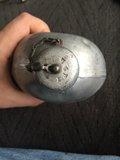 Information
Information














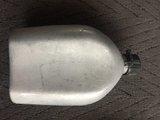
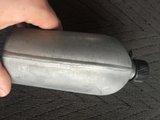
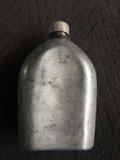
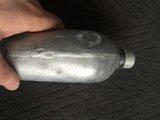
 Register To Reply
Register To Reply










